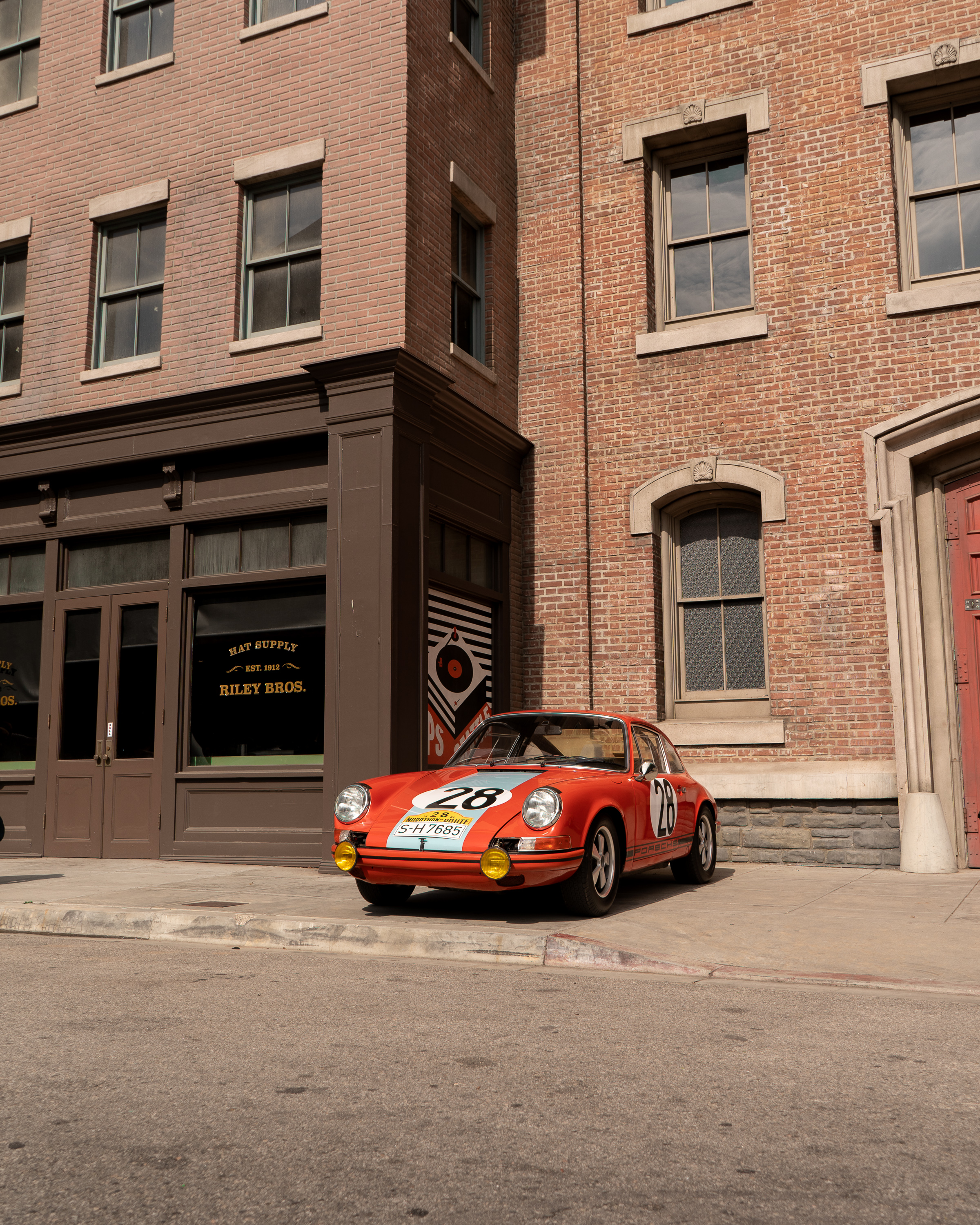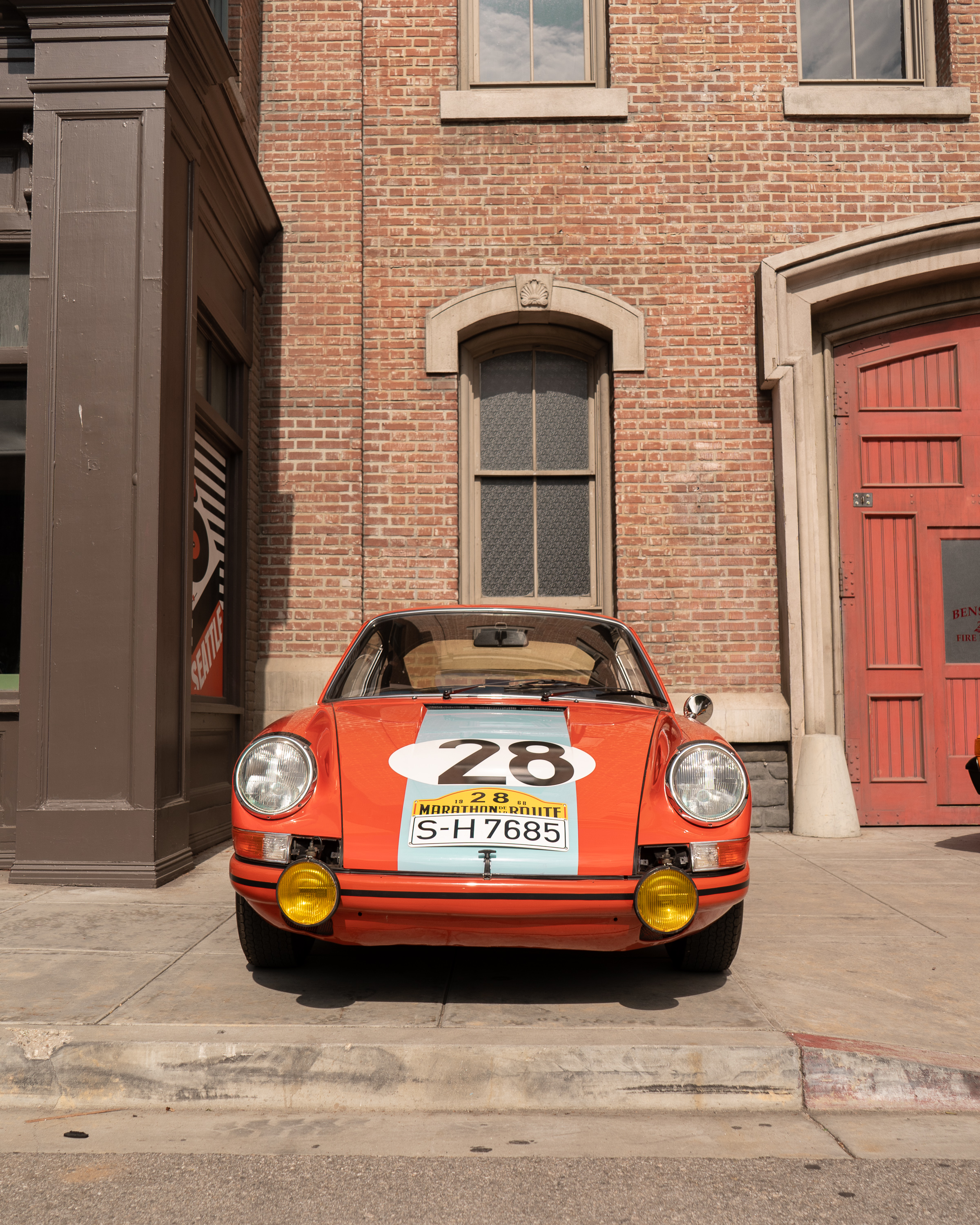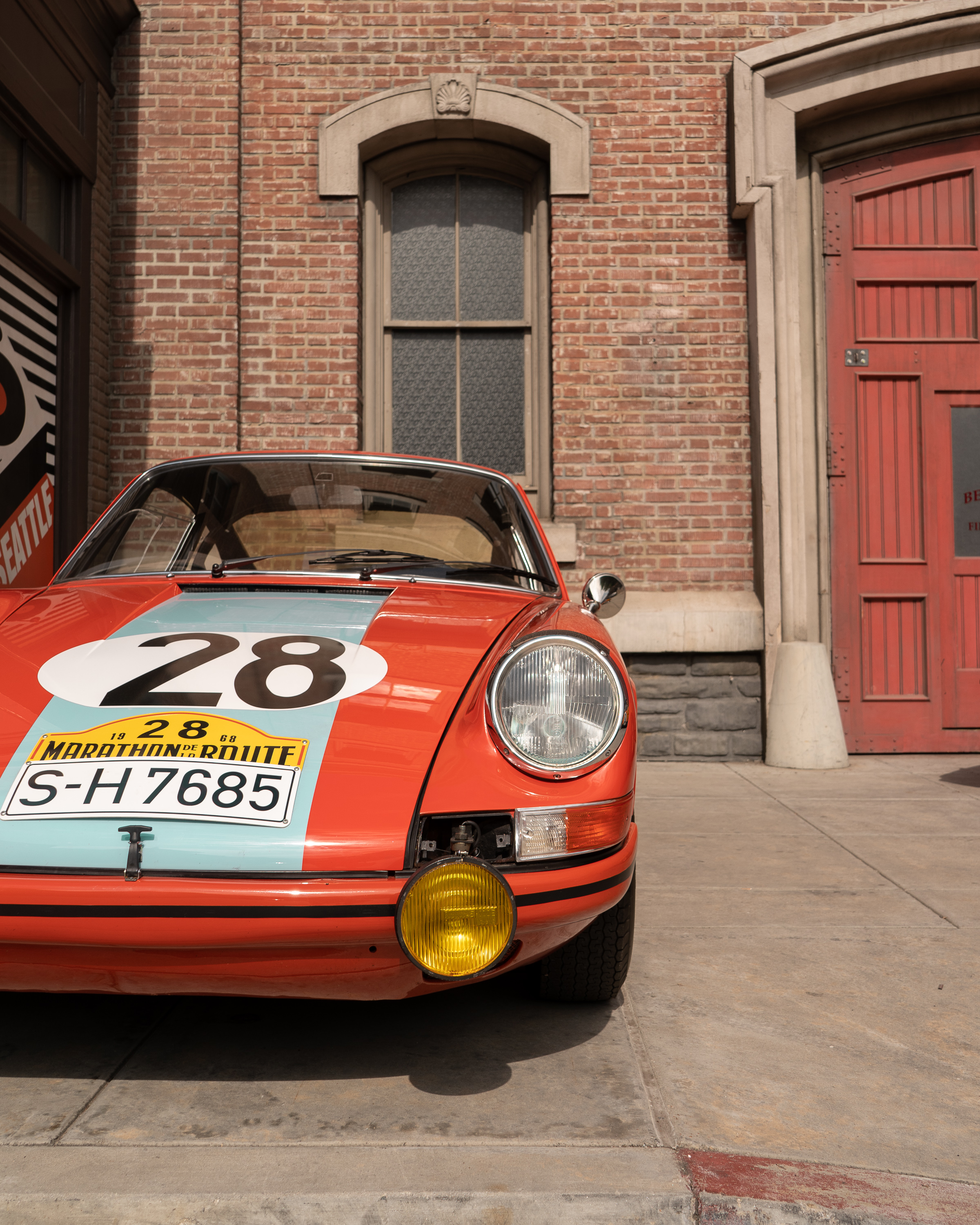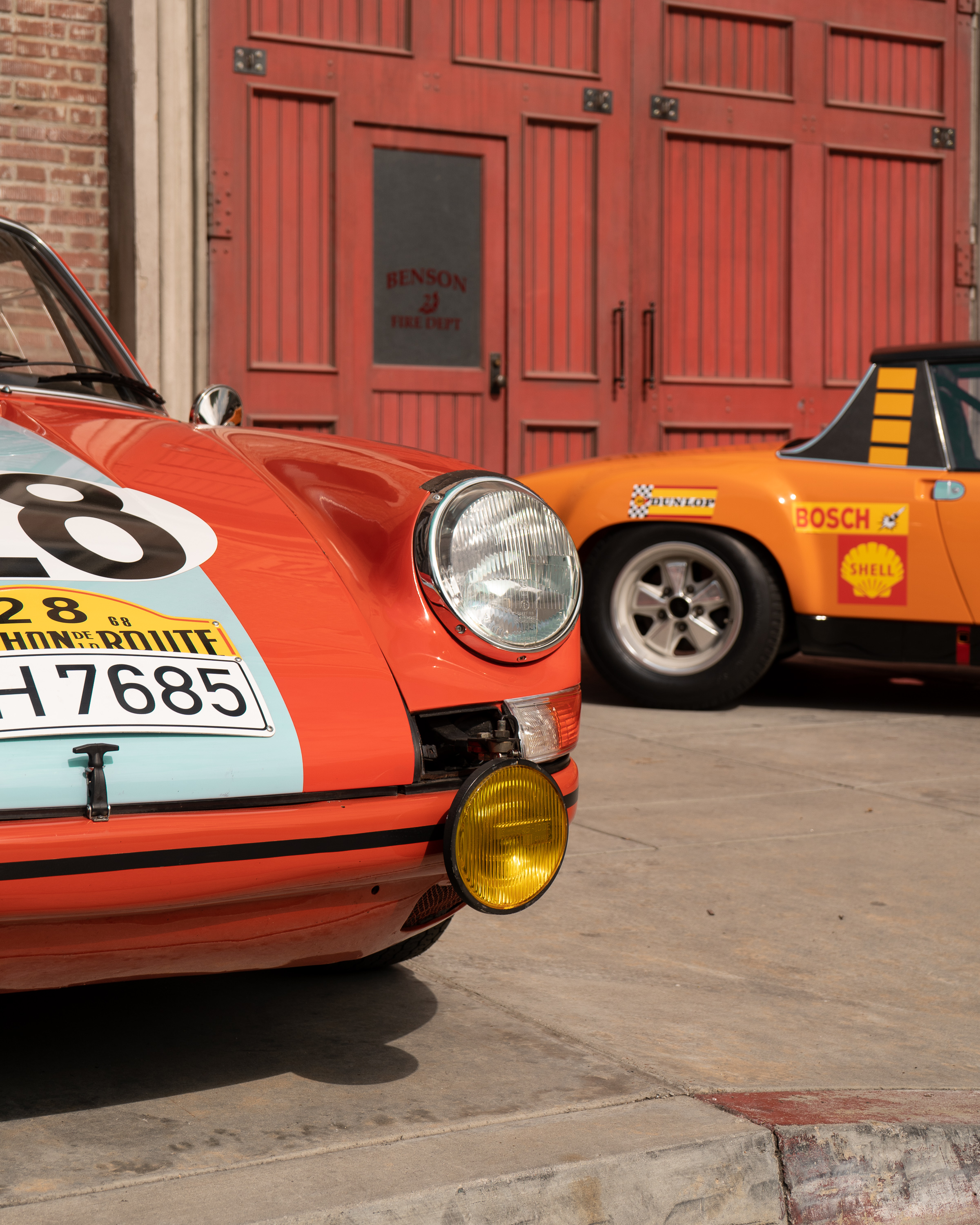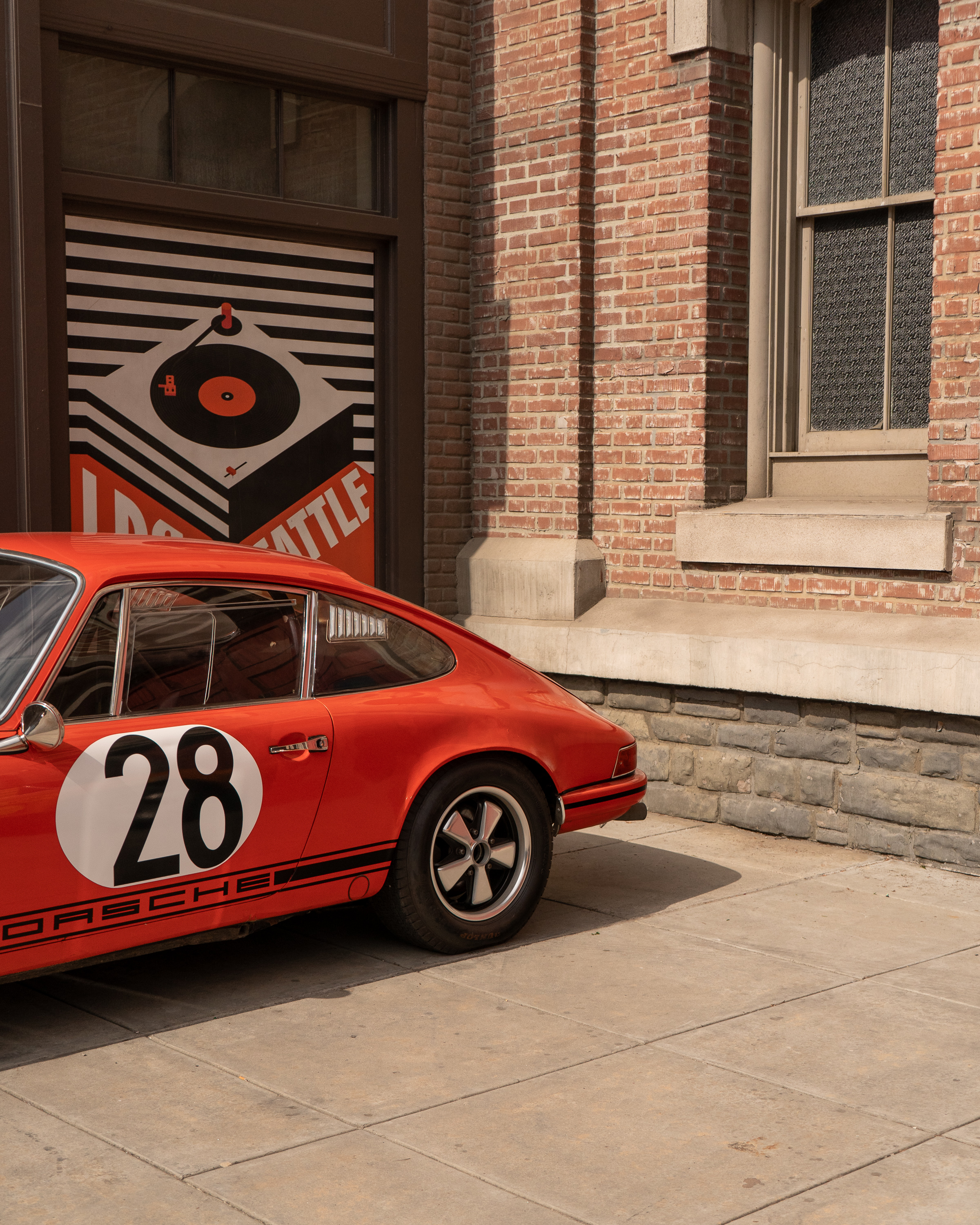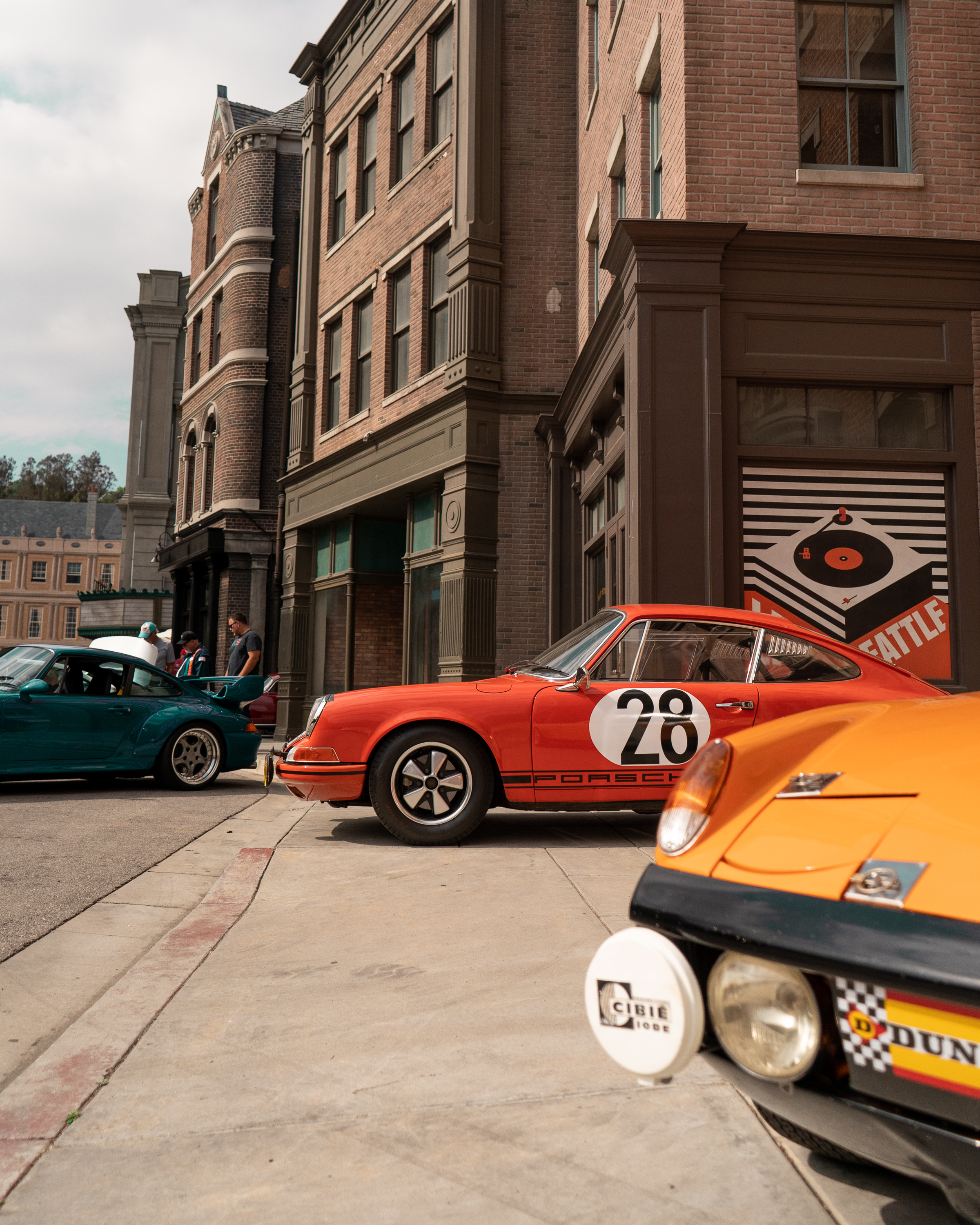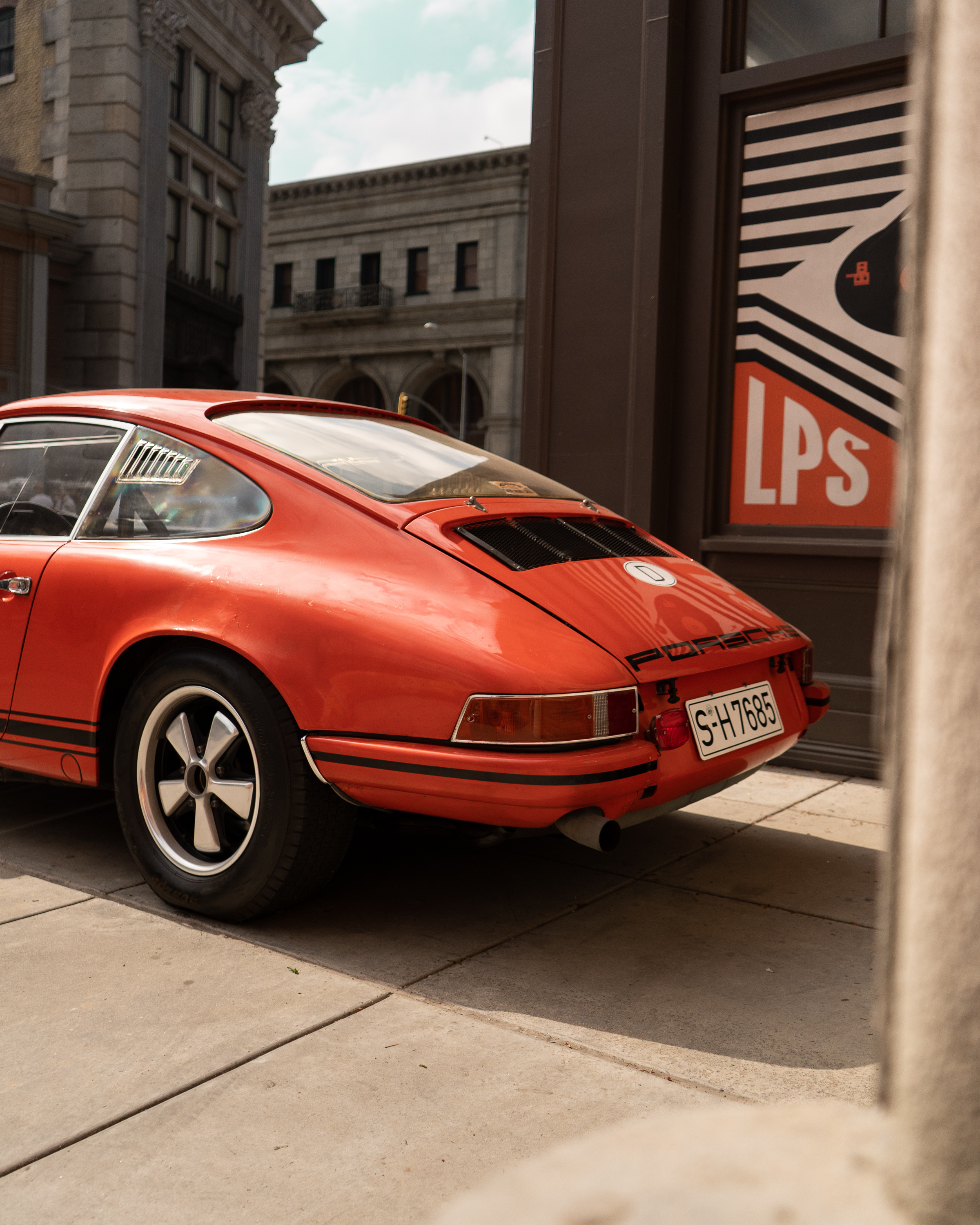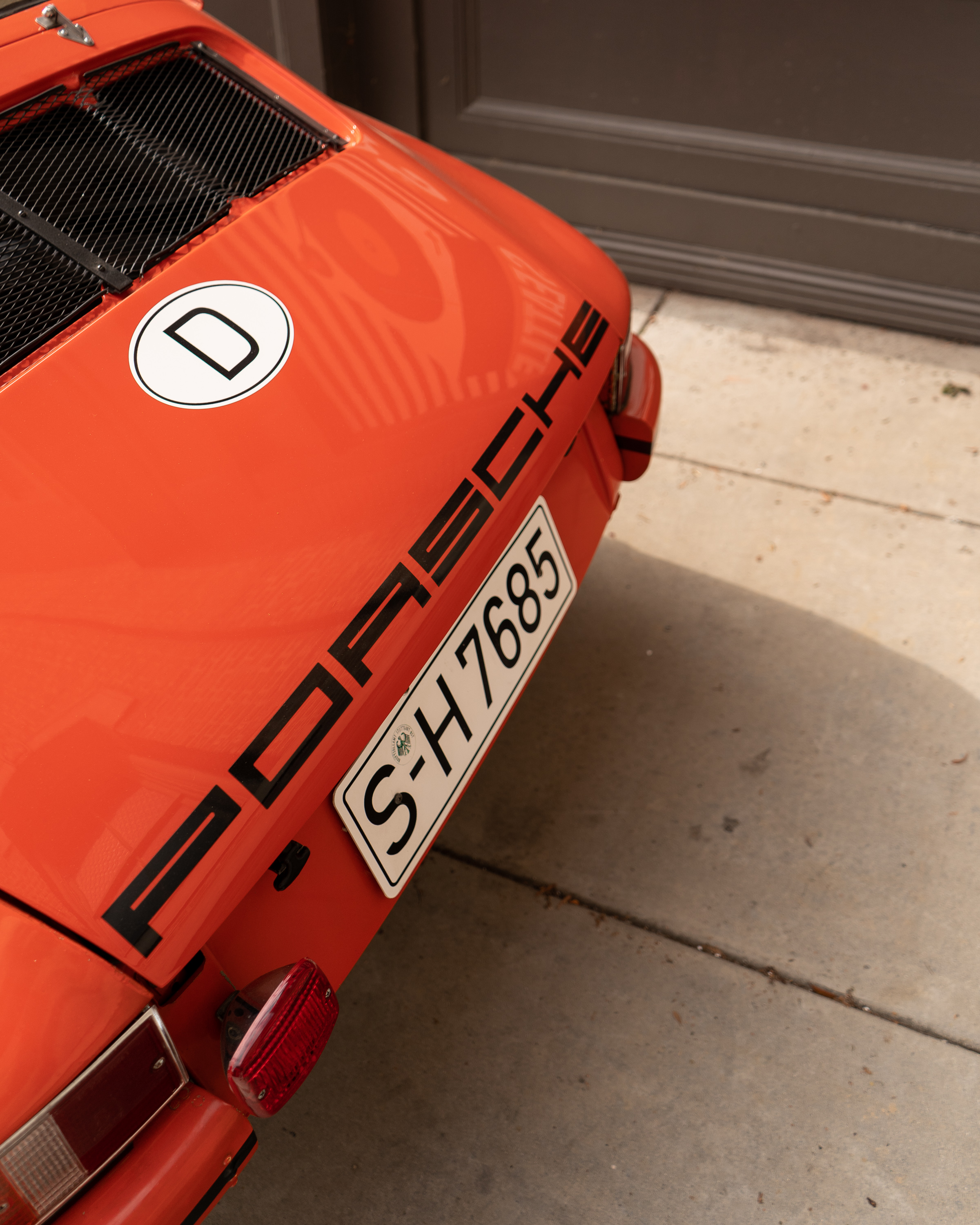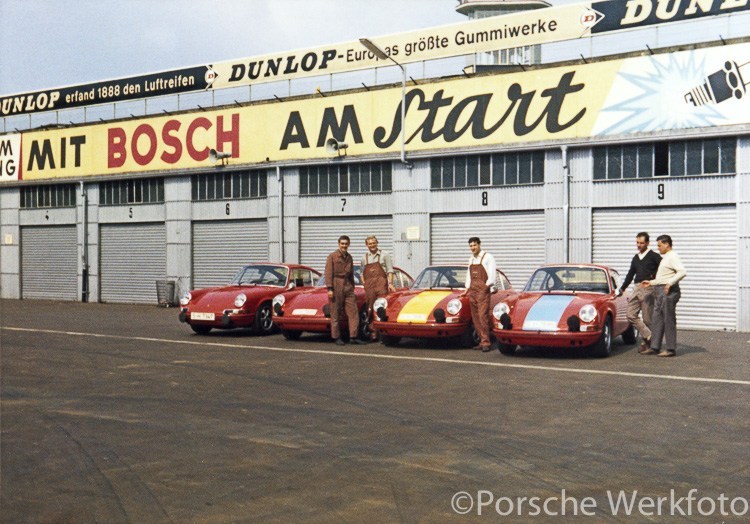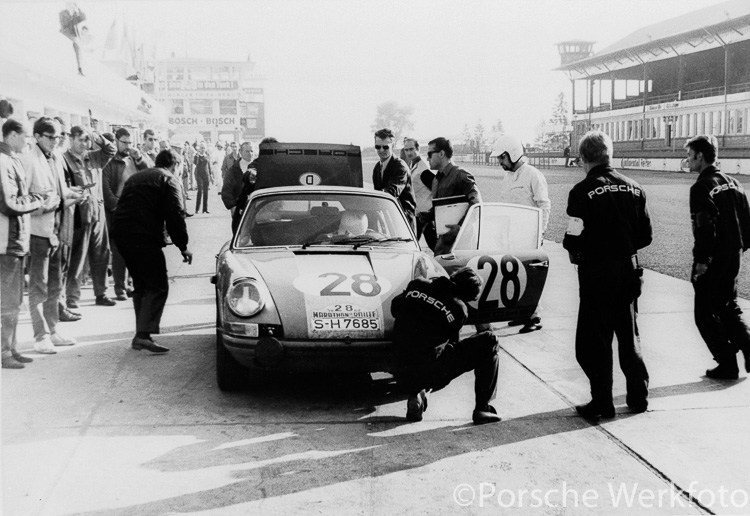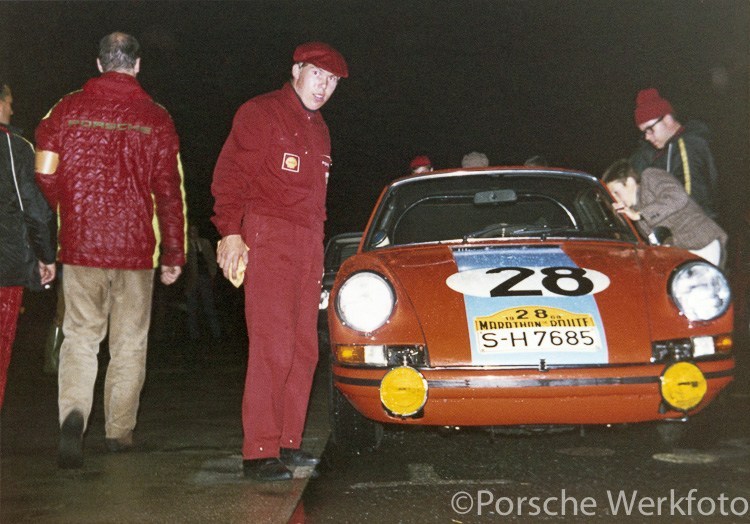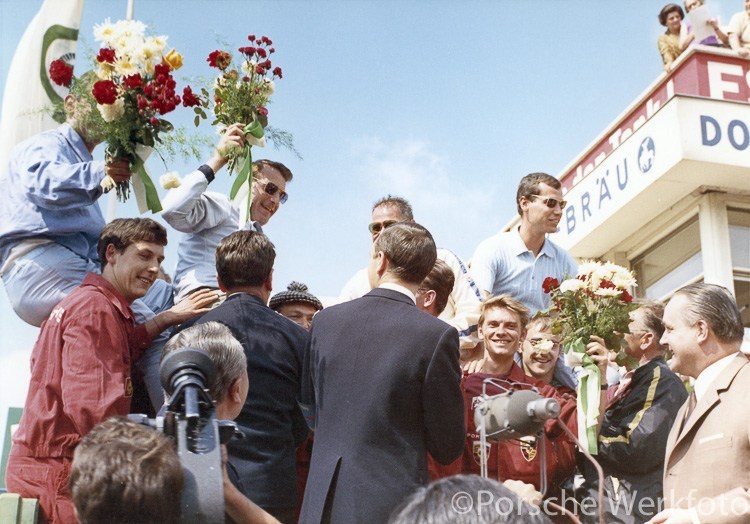1969 911 GTS

Run between 1965-1971 the Marathon de la Route was an epic 84-hour endurance race held at the Nurburgring that pushed both car and driver to the edge. Accompanied by some very unique rules this race has gone down in motorsport history as one of the most demanding races. The event was created to replace the infamous Liege-Rome-Liege rally held between 1931-1964. To highlight the difficulty of this road-race, in 1955 the race saw a record entry of 141 of Europe's finest race and rally drivers, of which only 56 would finish. The race ran a grueling 3,100 miles over 90 hours that included more than 30 mountain passes and six countries, with the factory Mercedes Benz 300 SL driven by Pierre Stasse and Oliver Gendebier taking 1st Place.
With sharp growth of traffic around Europe in the 1960s and race cars being faster than ever it became more and more challenging to maintain spectator and driver safety. Competitors had to contend with standard vehicles, livestock and other lurking challenges around every corner while battling their fatigue and the treacherous roads making it evermore dangerous. Safety concerns combined with the challenging logistics of getting stricken cars repaired lead to the organizers moving the event to the Nurburgring in 1965 after nearly 35 years. Porsche would utilize the new event format to test and develop new cars as it was much cheaper to race than it was to rent the track out privately. If all went well, it was also a great source of PR as it was held just one month before the release of new models.
In 1968 Porsche came with some new weaponry in the form of its four 911 S 2.0 with a new 2,268mm wheelbase body. The lead car was entered as a 911 R, however, it was not a full-spec R as it featured an uprated 911 S engine with Bosch mechanical fuel injection developing 170bhp and hydro pneumatic McPherson suspension design. Furthermore, due to the races odd racing regulations on pit-stops that if broken would result in horrific penalties, Porsche engineers designed the car to be easily repaired if damaged.
Before the race Porsche mechanics practiced changing the front strut assembly without having to bleed the brakes when the front calipers were removed. During the race mechanics needed to complete this task twice, each time completed in around 4 minutes. The most extended repair the team needed to complete was replacing the rear axle which took just 16 minutes and was completed during one of the races "free" repair opportunities (a 20-minute window given to teams two times in the race). Gunter Stekkonig recalled with levity "We heard noises from the rear axle maybe 30 laps before, so we tried to drive the car until we could perform the repair without the penalty. Luckily we were able to get it done!"
After 84-hours the number 28 car driven by Herbert Linge, Dieter Glemser, Willi Kauhsen went on to complete more than 10,100km around The Ring taking first place.







